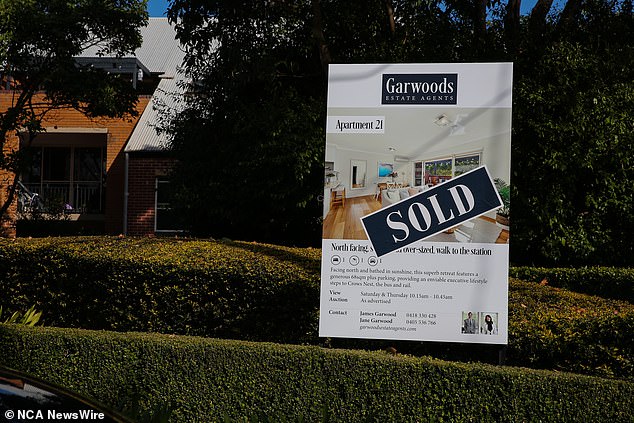Horror graph finally settles the boomers vs millennials housing struggle argument
A new study may have finally disproved an old boomer theory that millennials are incapable of saving money; Houses were simply more affordable in the 1980s.
The research, published by the Reserve Bank of Australia, examines how Australians have experienced saving for a home over several decades.
A graph in the 10-page report showed that in 1985, potential buyers needed just two years of moderate savings to have enough for an initial deposit.
However, in 2023, a household with an average income of $105,000 per year would take five and a half years to make a down payment.
Paying off mortgages now requires a third of a household’s income, compared to just a fifth forty years ago, in the 1980s.
A graph from a new 10-page report may have finally put an end to Millennials’ old talking point about their inability to save money: Homes were simply more affordable in the 1980s

In 1985, it took an average-earning household just two years to make a down payment, while in 2023 potential buyers will have to factor in a five-and-a-half year wait.
According to PropTrack Senior Economist Angus Moore, interest rates have shot up faster in the past 12 months than they have since the mid-1980s.
“Over the last two years, we’ve had a period of relatively good affordability in 2020 and 2021 with very low interest rates, compared to now where rates have risen as quickly as we’ve seen since 1980,” Moore said. news.com.au.
‘And that has increased mortgage repayments very substantially, and it means that far fewer houses are affordable, across the income distribution.’
Even more bad news for millennials is that the number of affordable homes has also fallen sharply in recent years.
Affordability is now at its ‘worst level’ in thirty years, with a middle-income household only able to consider 13 percent of homes on the market.
In the 1990s, that same household could account for roughly 31 percent of the market.
Today, middle-income households must save at least 20 percent of their income for more than half a decade to secure a 20 percent down payment for a median-priced home, according to Proptrack’s latest housing affordability report report.
Lower-income homes face the toughest hurdles, with an annual salary of $64,000 providing access to only three percent of homes on the market.
Where people choose to live influences the purchasing power of potential homeowners, with New South Wales, Tasmania and Victoria having the highest purchase prices.
A middle-income household is limited to just seven per cent of homes in NSW.

Where people choose to live influences the purchasing power of potential homeowners, with New South Wales, Tasmania and Victoria having the highest purchase prices (pictured, Melbourne)
However, for those looking to buy in Western Australia, the report’s findings offer a more optimistic picture of home ownership.
A median income is enough to consider 22 per cent of homes in WA as house prices have grown more slowly on the west coast.
“Five years ago, Western Australia was effectively the least affordable state in Australia at the height of the mining boom…. But since then, prices in WA have actually risen quite slowly, and it’s now a pretty affordable state compared to other states,” Moore said.
According to the economist, the interest rate increases of the past year and a half will probably not continue in the next eighteen months to two years.
Higher salaries and incomes are also expected to offset higher mortgage costs, although this trend will not occur anytime soon.
Recent programs introduced by the government, including the First Home Loan Deposit Scheme, are providing buyers with some relief, and building homes from scratch is still considered the best way to tackle costs.
